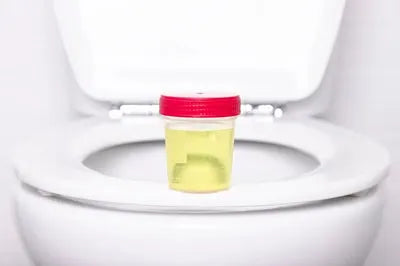Dipti James, 56, led an active lifestyle until one day when she experienced a slight bladder leakage as she rushed to the toilet. "It happens with everyone sometimes," she thought to herself, and soon it became a regular occurrence. She started leaking small amounts whenever she sneezed, coughed, laughed, or did any kind of physical movements.
"I started being very mindful about how I laughed, coughed, sat, and stood; I was constantly anxious and afraid," explained Dipti.
The reason for her bladder leakage was menopause.
"My doctor put me on medication, gave me a list of foods to avoid and add to my diet, and asked me to practice pelvic floor exercises," shared Dipti. "While I still experience bladder leakage every now and then, things are much more manageable now."
Bladder incontinence means bladder leakage or urine leakage that you can’t control, and while it might seem dire and hopeless at first, there’s a lot you can do to decrease your risk of incontinence episodes.
With the right treatment plan, you can even go from leaky to leak-free bladder completely! Below are nine effective tips and strategies to help you manage your bladder incontinence better. Keep reading!

1. Understand the causes and types of bladder incontinence
Identifying and understanding the causes behind your bladder incontinence and the type of bladder incontinence is important for managing and treating your condition properly.
The thing is bladder incontinence can have various underlying causes. In Dipti’s case, it was hormonal changes that happen during menopause. Some other common causes of bladder incontinence include:
-
Ageing
-
Weak pelvic floor muscles
-
Childbirth and pregnancy
-
Diabetes
-
Urinary Tract Infections (UTIs)
-
Neurological conditions (e.g., Parkinson's disease, multiple sclerosis)
-
Certain medications (e.g., diuretics, sedatives)
-
Obesity
-
Chronic coughing
-
Constipation
Additionally, there are different types of bladder incontinence. Dipti suffered from stress incontinence in which any activity that puts pressure on the bladder causes the bladder to leak. The three other common types of bladder incontinence are:
-
Urge incontinence involves a strong and sudden urge to urinate, often resulting in accidental leaks before reaching the bathroom.
-
Overflow incontinence, on the other hand, occurs when the bladder is unable to empty itself completely, leading to frequent or constant dibbling of urine.
-
Functional incontinence is related to physical or mental impairment, such as Parkinson's disease, that keeps you from reaching the toilet in time or from using it.
2. Talk to a healthcare professional for diagnosis and treatment options
Healthcare professionals, such as urologists, urogynecologists, or specialized continence nurses, have expertise in bladder incontinence treatment. Once the type and the cause behind your urinary incontinence is identified, they can provide you with personalised treatment options based on your condition and medical history.
Even though they will guide you through the available options and help you choose the most suitable one for your situation, it’s crucial that you have a good grasp over what treatment you’re getting into. Treatments can range anywhere from simple lifestyle changes and bladder incontinence medicines to surgeries!
Also make note of the regular follow-up appointments as they are important to monitor your progress, assess the effectiveness of the chosen treatment, and make any adjustments to the treatment plan with your healthcare professional if necessary.
3. Develop a toileting schedule and stick to it
Plan toileting attempts, say, every two to three hours, even if you don’t feel the urge to go. Similarly, emptying your bladder before leaving home or going to bed is a great way to decrease leakage and prevent embarrassing accidents.
4. Practice pelvic floor exercises
The pelvic floor is a sheet of muscles that support the bladder and other organs of the urinary system and help in the process of urination. And when these muscles weaken, you may experience urine leakage when laughing, coughing, or lifting something heavy, or need to go the bathroom again and again in a short period, or an urgency to get to the bathroom suddenly and leaking on the way.
Pelvic floor exercises, or bladder control exercises such as Kegels, can benefit those with urinary incontinence by strengthening the pelvic floor muscles. And Kegels couldn’t be any easier to do! Simply imagine yourself stopping urination midstream and preventing yourself from passing gas, the muscles you just tightened are your pelvic floor muscles. Now squeeze or tighten these muscles for a count of three, and then relax for a count of three. Do a set of 10 to 15 squeezes at a time, three times a day, and your bladder control should improve within six weeks. If you experience a sudden, strong urge to urinate, contract and relax these muscles very quickly. Most of the times, the sensation of urgency should be taken care of, and you’ll reach the bathroom in time.
5. Use absorbent products as needed
One effective strategy for managing bladder incontinence is to use absorbent products as needed. These products, including adult diapers, liners, and underpads are designed to absorb urine and keep you dry, minimizing discomfort and embarrassment caused by leaks. They are particularly useful in situations where access to a bathroom may be limited or when participating in physical activities that may worsen incontinence.
If you’re looking at options, try products manufactured by Friends, India’s No.1 manufacturer of disposable hygiene products. We have you covered for all your incontinence-related needs. From underpads to protect your mattresses, to insert pads for managing slight leaks and drips, to ultra-absorbent overnight diapers that can give you more than 16 hours of protection against urine leaks and wetness; we have everything. Our products are made with skin-safe ingredients, and are 100% free of chlorine, latex and other harmful chemicals. Choose Friends to live with complete azadi from incontinence!
6. Wear clothing that is easy to remove and clean
Opting for clothing that is easy to take off and put back on can make bathroom trips more convenient and handling leakage accidents or changing absorbent products easier when needed. Consider choosing garments with elastic waistbands, velcro tapes, or snap closures, as they can be removed and put back on quickly and effortlessly.
7. Plan for outings and travel
Start by locating all the nearest bathrooms at unfamiliar destinations, such as shopping malls, restaurants, parks, or tourist attractions. This provides a sense of security and helps you easily find your way to a bathroom as the need arises.
Additionally, while going out, do not forget to pack necessary incontinence supplies such as adult diapers, extra set of clothing, wet wipes, and carry bags or newspapers for disposal of soiled items.
8. Stay hydrated but avoid bladder irritants
If cutting back on water is your response to incontinence, then it will only make your condition worse. When your body is dehydrated, it produces concentrated urine which may irritate the bladder and result in pain during urination along with frequent urge to urinate. However, excessive fluid intake can also put pressure on the bladder and increase the frequency of urination. Finding the balance between dehydration and excess fluid intake is the key.
On the other hand, certain foods and drinks can irritate the bladder and worsen incontinence symptoms by contributing to urgency, frequency, or leakage. Common bladder irritants include caffeine (found in coffee, tea, energy drinks, and some sodas), alcohol, spicy foods, carbonated drinks, and acidic fruits or juices.
But an interesting thing is that not every bladder irritant affects every person. So, try eliminating these bladder irritants from your diet for two weeks, and then reintroduce them one by one to find out what triggers your bladder.
9. Seek support from family, friends, support groups, or therapists
Living with bladder incontinence is not easy and sometimes can lead to very complicated feelings, such as helplessness, anxiety, anger, self-loathing, and self-pity. During these difficult times, seeking support from family and friends can make all the difference.
Openly sharing your challenges, experiences, concerns, and feelings with your loved ones’ can help create an understanding and supportive environment, reducing feelings of isolation and helplessness. By doing so, your loved ones can offer practical and emotional assistance as you navigate the daily challenges of bladder incontinence.
In addition to support from your loved ones, consider connecting with support groups specifically focused on bladder incontinence. Support groups provide a safe space to share experiences, seek advice, and learn from others who are going through the same challenges as you.
If incontinence is causing significant emotional distress or impacting your overall well-being, consider seeking counselling or therapy. A therapist can provide guidance and help you develop coping strategies and address any negative thoughts or emotions. Therapy can empower you to develop resilience, self-acceptance, and a positive mindset as you navigate the challenges of bladder incontinence.
In the end, with the help of these tips and strategies, you can enjoy your days without an incontinence-related burden. For more tips, tricks and advice keep coming back here and don’t forget to ask away your doubts in the comments section blow. See you in another blog!
FAQs on Bladder Incontinence:
1. What is bladder incontinence and what causes it?
Bladder incontinence is a condition marked by the involuntary leakage of urine. It occurs when the bladder's control over urine storage and release is affected. Various factors can contribute to bladder incontinence, including weakened pelvic floor muscles, nerve damage, hormonal changes, certain medications, urinary tract infections, underlying medical conditions, certain health conditions such as diabetes and lifestyle factors.
2. What are the different types of bladder incontinence?
There are several types of bladder incontinence, including:
-
Stress incontinence: Urine leakage occurs whenever a physical activity puts pressure on the bladder.
-
Urge incontinence: A sudden and strong urge to urinate is followed by involuntary urine leakage.
-
Overflow incontinence: Frequent or constant dribbling of urine due to the bladder not emptying completely.
-
Functional incontinence: A physical or cognitive impairment prevents a person from reaching the restroom on time or from using it.
-
Mixed incontinence: A combination of two or more types of bladder incontinence.
3. How can I manage my bladder incontinence?
Management strategies for bladder incontinence include:
-
Pelvic floor exercises such as Kegels.
-
Behavioural techniques such as bladder training and scheduled voiding.
-
Medications.
-
Medical devices such as pessary or urethral insert.
-
Absorbent products such as adult diapers, insert pads, underpads, etc.
-
Lifestyle changes such as weight management and avoiding bladder irritants.
-
Surgery in severe cases.
















